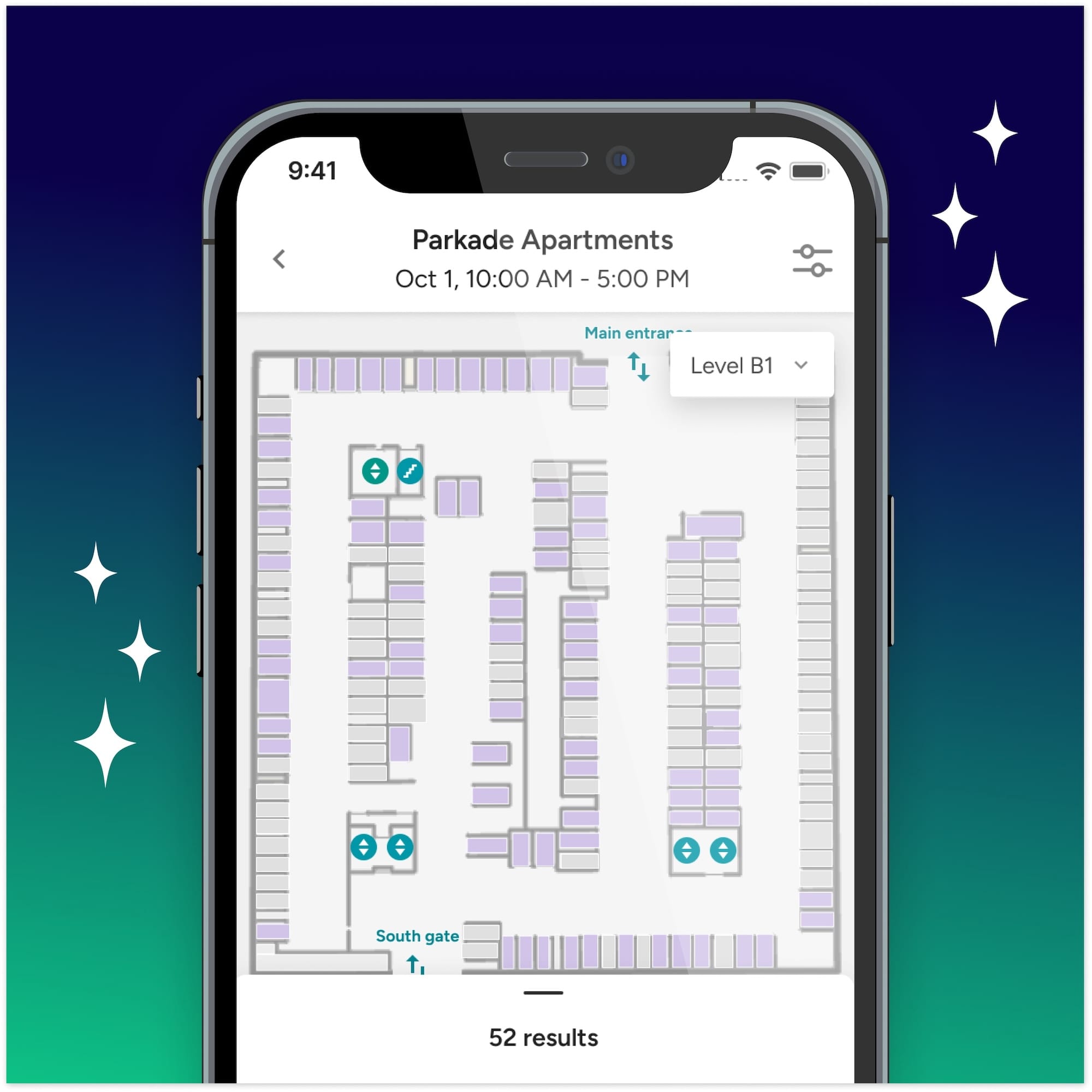

TABLE OF CONTENTS
Navigating zoning ordinances in your local area can be a daunting task. After all, the legal frameworks of local governments tend to be complicated to interpret at their best, and altogether impossible at their worst.
Yet for professionals in development and building design, this step is critical for understanding all the ins and outs of local zoning. A proper interpretation of zoning code helps them figure out what types of projects will work in different parts of the cities, as well as what types of incentive zoning may be available to them in certain jurisdictions, such as reduced parking or more square footage for the project.
According to the Cornell Legal Information Institute, Incentive Zoning is:
“a land-use regulation strategy that allows property owners to receive certain benefits or exemptions from zoning restrictions in exchange for meeting certain public goals or objectives. It essentially provides an economic incentive for property owners to undertake certain activities that benefit the community.”
As Ben Weber, a planner with Walker Consultants, describes it:
“Providing affordable housing is one of the more common methods used to reduce parking requirements. Another popular allowance is by meeting building energy efficiency targets. The bonus can vary, from additional square footage or dwellers units to reduced parking requirements.”
Although many cities have begun to get rid of minimum parking requirements altogether, until then, developers will have to rely on incentives to reduce parking. In jurisdictions with very strict regulations when it comes to new development projects, especially ones requiring extensive amounts of off-street parking as part of the development, these incentives can often make or break a project.
In this article, we’ll dive into some of the most common zoning incentives in the United States, showing what types of incentives they provide for developments as well as what requirements they stipulate as part of the deal. Along with this, the article will provide some specific examples from various cities.
A common incentive zoning strategy utilizes what is known as a transit-oriented area/zone to encourage certain types of development. Typically, this zone allows developments to reduce (or sometimes eliminate) parking, and/or expand the floor area of their development.
In some cases, these types of transit-oriented areas are implemented statewide. For example, in California, parking minimums have been done away with for housing, retail, and commercial developments within a half mile of a major public transit stop.
You can check the transit-oriented development ordinances in your city to determine what types of parking reductions you can take advantage of. Outside of California, many cities haven’t done away with parking minimums completely, instead opting to reduce parking requirements by a certain percentage.
One example is San Antonio, Texas, which reduces the percentage of minimum parking that needs to be built depending on proximity to the major public transit stop. Some developments at the edge of the zone might be required to build 75% of the required parking, while developments located right by the transit stop may have no parking requirements at all.
Outside of the half-mile erasure of parking minimums in California, overlay zones in San Diego have also reduced parking requirements. Developers can opt in to the Transit Area Overlay Zone (TAOZ) in various areas of San Diego, which offers them a reduction of 0.25 parking spaces per residential unit and a reduction of 4.3 parking spaces per 1,000 square feet of commercial floor space.
If you’re a developer looking to purchase land, it’s worth getting a full report on the property. This report should include information on whether it is located within a transit-oriented area that offers reduced parking requirements.
Cities typically have to encourage developers to build affordable housing by providing them with an incentive to sweeten the deal. This is one of the reasons affordable housing has become tied with parking reduction when it comes to development deals.
Developments that include affordable housing are able to opt-in to these mechanisms provided by the city. Typically, parking requirements are reduced if you include a certain amount of affordable housing as part of the development.
Oftentimes, these requirements translate into percentages of the housing total that have to be dedicated to affordable housing. The requirements for the amount of affordable housing that needs to be built can change depending on the jurisdiction the development is located in.
Evanston, IL, for example, removes the parking requirement for all units within developments that include “5 percent on-site affordable housing or 10 percent on-site housing with public financing”.
It’s common to see these types of affordable housing incentives in California, where affordable housing is in dire need. One example is Anaheim, which offers a density bonus for building affordable housing. In addition to that, they also offer impact fee deferments, expedited entitlements, and energy efficiency rebates to developers who offer the city affordable housing.
This benefit can be even greater when building affordable housing near transit. Los Angeles’ Transit Oriented Communities Incentive Program does just this, offering tiers of incentives based on the amount of affordable housing, and includes increases in density and FAR (Floor Area Ratio) and a decrease in parking requirements. For example, tier 4 would require no parking for residential units, and a 40% reduction of parking for commercial units.
During the development process, jurisdictions can request that the development include certain types of public amenities. These public amenities can include a public park or greenspace, affordable commercial space, or a space in need by the community, such as day care facilities.
The Seattle city website lists some other options for this type of incentive zoning, including bathrooms, right-of-way improvements to improve public access, accessibility to light rail, and public bathrooms. In the case of Seattle, the development must also meet a green building requirement, using 15% less energy than the minimum building code requirement and gaining specific certifications such as LEED Gold.
Oftentimes, the extent and type of public amenity that the development will include is negotiated between the development team and the jurisdiction it’s being built in. This includes the reduction in parking or increased density that the developer will get as part of the deal.
This incentive typically includes reductions in parking requirements or an award of more square footage of units to the development.
One example of this type of incentive is the city of Los Angeles, which provides additional floor area to a project if it builds a publicly accessible outdoor space as part of the project. The Seattle incentive listed above also offers more floor area for the various public improvements they encourage.
Energy-efficient developments can also take advantage of some parking benefits. These reduced parking requirements often are granted to buildings that achieve certain standards of LEED or other green building certifications. These can include LEED Gold, Passive Building, or Evergreen Sustainable Development Standard, among others.
Typically, the benefits offered for green buildings end up being density bonuses. Such is the case in the city of Miami, which offers a percentage bonus of floor area depending on what level of certification the project achieves.
For example, a LEED Silver building under 50,000 sq. ft. is allowed a bonus FLR (Floor Lot Ratio) of 2%. A LEED Gold building is offered double that, with a 4% bonus to the FLR. LEED Platinum buildings are offered a much more substantial bonus of 13% to the FLR.
The city of Boise, on the other hand, offers a 50% parking reduction in certain zones if the “Project contains all electric or geothermal energy source, consumes 15% less energy or meets green building code, consumes 15% less water, and dedicates on-site space for recycling.”
Staying up to date on the various incentives in your area allows a developer to build more efficiently, saving money and time in the process.
Incentives are also always changing. Some new city incentives might ask developers to build EV spots as part of their development. This might look like a reduction of two spaces for every one new EV spot. In other cases the incentive might look like dedicating space to car or bike sharing, depending on what the city is in need of.
At the same time, the ground is shifting in the world of parking requirements. Weber points out that many cities might get rid of their minimum parking minimums altogether in the very near future. As parking requirements change throughout the country, it’s important to keep parking management technology as a priority when planning your development. Modern solutions like Parkade can help buildings park more cars in fewer spots, ensuring that you get the maximum use out of your parking areas.
Until parking requirements are completely away with, the current system of incentives will continue to play a vital role in reducing parking and increasing density in developments around American cities.
“Adjustments to parking requirements can get pretty complex,” Weber notes, which is why it’s helpful to have a planner on hand to help interpret the code and determine what type of project can be built.
With a thorough knowledge of incentives in their pocket, a developer is one step closer to realizing their development vision, and to ensuring a successful and profitable end result to the project.

We’re thrilled to announce one of our most significant leaps forward this year: the launch of dynamic maps across our mobile and web applications.
Read Story
Now that AB 1317 is official, it’s time to brush up on the requirements and see how your properties stand to benefit.
Read Story
For multi-family communities still offering first-come, first-served parking for residents, Southwest's decision may shed some light on why it's time for a switch.
Read Story